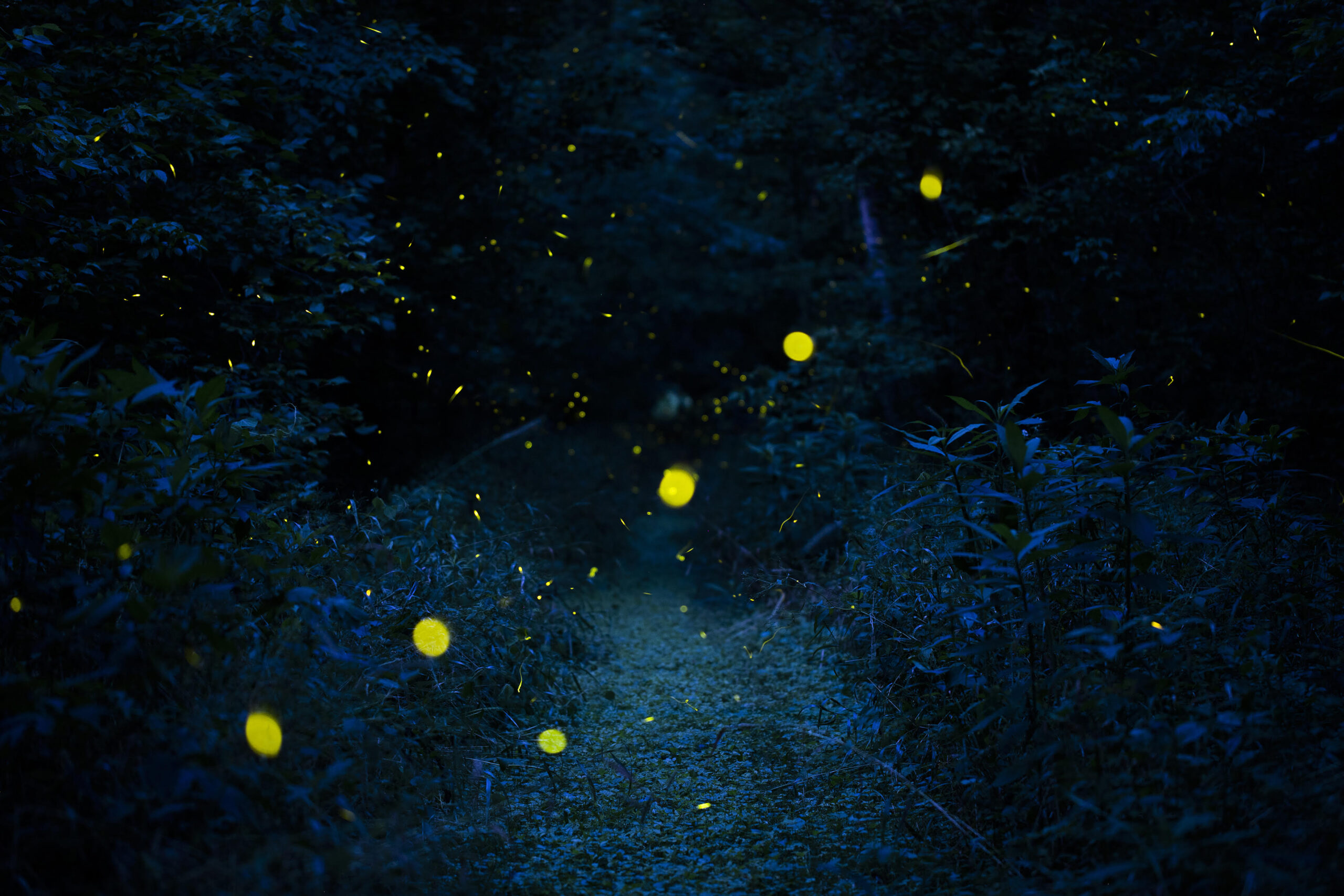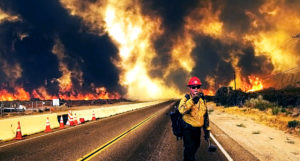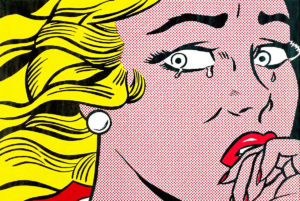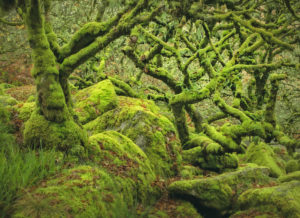This summer I spent some weeks in the north woods, in a cottage on Lake Michigan, in an eerie little crescent of absolute climatic perfection between Canadian wildfires and the 110-degree South. It was 68 and crystal blue. Once a week, a heavy morning storm would move into the bay and throw everything into ecliptic shadow, then withdraw and leave it glistening. There were a few smoky days, when the air stung your eyes. On one of them I got a message from my old friend Stacey Clarkson James.
She was the art editor at Harper’s Magazine when I worked there 20 years ago. We bonded when everybody in the office took a personality test one afternoon. It was supposed to determine whether you were a “Dreamer” or “Practical”. Stacey and I both scored 97% Dreamer. She’s hilarious and sharp and compulsively creative. As a kid in South Carolina, she used to sing in malls with her family. Her message said that her husband Sam’s book about fireflies had finally been printed.
I knew what she was talking about from having followed the project from a distance, over text. Her husband, Samuel James, is a world-class photographer who grew up in Cincinnati. When she met him, they were in the New York journalism scene but parachuted out as a couple and landed in the forested Appalachian foothills of his native Ohio, the southern part, not far from the Kentucky border. It’s the middle of nowhere, frankly, even by southern Ohio standards, but their immediate visual environment is very beautiful and state-parkish.
Stacey and Sam are both passionate naturalists. They’re home-schooling their daughter, Josephine, which for Josephine means a lot of studying biology in the woods. When it’s time to learn about metamorphosis, she goes to the pond. Twice a year she and her mother help move hundreds of DeKay’s Brownsnakes across a road that blocks their natural migration path. They count them as they go. Last fall it was 679, juveniles and adults. Sam is sometimes hired to inspect the middens of endangered Alleghany woodrats. He looks for raccoon scat, which can infect the woodrats with a deadly parasite.
Sam and Stacey had no way of knowing, when they made the move to that the particular little part of Ohio, that it was a global hotspot for firefly diversity. They found that out only by going for walks through old fields and forests, in May and June. The lightning bugs were everywhere. Some nights they would be so thick that they seemed to affect the overall light-level. It wasn’t just the number but the variety, too. Different sub-species had their own colours and patterns of signalling. They lit up during different phases of the evening and night, and in different microhabitats. Some preferred meadows; others, the trees. Some went on flashing for hours, whereas others had briefer windows.
Sam started trying to photograph them. He wanted to document the phenomenon, but also to preserve something, if possible, of what it was like to witness it. That meant capturing elements of time and rhythm. He started going to the fields before dusk and staying late, basically all night. They would all three go. Josephine watched and played until she passed out on Sam’s tripod bag on the ground — many nights of doing that, over four years, experimenting with ultra-long exposures. Sometimes he would leave the shutter open for nearly half an hour (after which point the image started to get too noisy with information). He discovered that, for whatever reason, a relatively modest Canon digital camera worked best for this sort of picture. It seemed to stay sharp longest in the low-light conditions.
Sam had made a book of this work, and now Stacey wrote to tell me that they had received the first box of copies in the mail. I had heard so much about the project, and they wanted me to be among the first to see the finished thing. I was moved. I wrote back in congratulation and excitement and said something like: “Send me a PDF!!!” After that, there was an uncharacteristic silence of one or two days. You know how you can feel, in the rhythm of texting, when there’s something not quite right about a pause on the other end?
At last, Stacey wrote to say that she and Sam had discussed the matter and were uncomfortable with the idea that my first encounter with the book should be electronic. It was not the right way to experience the object. They had taken pains to make it a work of art. The printing had been as important as the photography. I needed to see a physical copy. I told her that I understood (and did) but explained that, unfortunately, I was way up in northern Michigan, a nine-hour road trip from their house. “That’s okay,” she said. “We’re fine to drive.” She’s one of those people who vibrate through the world like that.
She wasn’t being quite as intense as I make it sound. Someone in their family has a cabin up near where I was. I’d forgotten. They’d been to that part of the country before. We made a plan, and about a week later the little family came rolling up in a Jeep. Stacey has beautiful silvery hair now — she almost had a Patti Smith thing going. Sam looks like he could be Bradley Cooper’s younger brother. With them was Josephine, a precocious six-year-old pip of a girl with a winning bowl cut. She was excited because they had seen a porcupine in a tree by their cabin. I asked her what it was doing. “It was very very sleepy and just stared at us,” she said.
Inside the cottage, in the little dining area where the best light was, we spread the book open on the white wooden table. The format is 9”x12”, broad pages. The matte cover is gravitational: a picture of darkness, but darkness as Samuel James has learned to photograph it, with a tremendous subtlety of gradation between the blue and black, and the greens of the forest glowing through darkly from behind. Sometimes there is moonlight. The image has the quality of actual nighttime, as if you could walk through it into the field. It is dappled all over with small bursts of yellow, wherever a firefly has flashed.

There are technical challenges involved in printing images of the night, especially when the focus is on the bright light of the fireflies’ bodies. Doing both was the challenge — holding onto the “tones and textures in the darks”, Sam said, “and still having the flash be luminous”. The fireflies had to glow on the page. Sam wound up settling on the independent Dutch fine-art publisher Fw:Books. He worked with Fw’s founding designer, Hans Gremmen, and with the Dutch printing house Drukkerij Robstolk, which has a reputation for handling dark images. Sam and Stacey flew to Amsterdam to consult in the production process. They described standing by the press and watching the printer hand-mix a batch of what they called “firefly yellow”, using ultra-saturated Japanese paint.
“His name was Niels,” Stacey said. “He had a little pot and a spatula.”
“It was cool to me,” Sam said, “because I felt like there was a lineage, going back in history, in Holland, to book-binding and the printed page.”
The only time they intervened, Sam said, was when it came to differentiating the different firefly colours. “This was an art project, but it was also a science project,” he said. “Some of the fireflies are that brilliant yellow, but others are green, and this one” — he flipped forward several pages — “is orange. Plus there are other yellows.” Some pages showed more than one flash-colour, meaning it had been a spot where multiple species mingled. Because of the long exposure time, you could see the flash-patterns, too. Some looked dot-dot-dot. Others made short streaks. Some made long straight comet trails. Or little isolated green blobs, like floating lanterns. Crazy squiggles. Elegant curves and bows. Some flash synchronously, in rhythm. It’s very special to be in the forest when that’s happening, a thousand fairy lights blinking on and off together in unison all around you. Each species has its own code. “My favourite one is the Pyractomena angulata,” Stacey said, “because he’s orange and he just will shimmer, a lot of quick flashes off and on.”
It gets even more complex, Sam said, when you realise that the species sometimes mimic one another, for various strategic reasons, most having to do with reproduction. It’s the males who go around flashing, trying to attract the females. “The females are sort of hidden in the vegetation,” Sam said, “discreet. You don’t really see them.” But females can flash if they want. They do so mainly in response to the males — little winks. But there’s another, darker reason females sometimes flash: the females of certain species engage in a form of cannibalistic mimicry. By imitating the mating signals flashed by the females of another species, they lure in horny males and gobble them up. All of this communication and deception is happening above the field, in a language of chemical light. (It makes sense that Werner Herzog includes Sam’s firefly images in his new film about neuro-biology.)
I asked how many species there were in the patch of land where Sam had been shooting. “Twenty-six,” he said, “that we’ve identified. Of those twenty-six, nineteen make a flash code.”
I was surprised to hear that some don’t flash. “Some of them have evolved and foregone the whole business of flashing at night,” he said. “Too dangerous.”
I asked why there would be such great firefly diversity in that hollow where they live. “I don’t actually know the reason,” Sam said. “The Appalachians are a firefly hotspot in general.”
“It’s really dark where we are,” Stacey added. “You have to have darkness and you have to have snails. The babies eat, voraciously, snails.”
“Yeah,” Sam said, “also, the soil has to be right. And we’re next to a preserve, so there’s not a lot of spraying and farming… But as to why there are so many kinds of firefly? It’s still a mystery to me.”
Sam added that there is still a lot we don’t know about these creatures. Scientists do even not agree on how or why firefly bioluminescence evolved. Some argue that it had to do with sex from the start (a means of attracting mates). That seems to be the dominant camp. It includes Lynn Frierson Faust, a pillar of lightning-bug and glowworm studies whose work Sam and Stacey frequently mentioned. But other entomologists theorise that the fireflies began to glow because of something called aposematism, an evolutionary mechanism by which species turn unusually garish or brightly coloured, in order to warn predators of the poison they contain — or to fool predators into thinking they contain it. In the fireflies’ case, the poison is real. Their chemicals are toxic. To some animals, anyway — bats, mice and lizards. Plenty of creatures eat them.
Sam turned a page of the book. “These dusk-flashers,” he said, “these yellow guys, they only flash at dusk and then they’re gone…”
In much the same fashion, Sam and Stacey and Josephine were suddenly gone, back to southern Ohio. But they left behind a copy of the book, which I’ve picked up at least 20 times since then. It absorbs you. The woods and sky are so dark in some of the images that you almost can’t see them; you have to sit there and let them reveal themselves. Meanwhile, all of this light-painting shines across the pages.
It’s hard not to feel a little melancholy, in this summer of climate horrors, looking at pictures of fireflies. There has always been something utopian about them (in my notebook I have a newspaper clipping from 1810 reporting that the “streets of Washington were lighted for the first time last week with glow worms and fire bugs, 500 of these insects being confined in every lamp…”). Their habitat is threatened — as Stacey had pointed out, they need darkness — and I see far fewer of them than when I was a kid, or even 20 years ago. God forbid there should come a day when a child will be forced to consult a book, to know what it was like to experience fireflies in full array. But if the day does come, Samuel James’s Nightairs will have safeguarded a glimmer.
Disclaimer
Some of the posts we share are controversial and we do not necessarily agree with them in the whole extend. Sometimes we agree with the content or part of it but we do not agree with the narration or language. Nevertheless we find them somehow interesting, valuable and/or informative or we share them, because we strongly believe in freedom of speech, free press and journalism. We strongly encourage you to have a critical approach to all the content, do your own research and analysis to build your own opinion.
We would be glad to have your feedback.
Source: UnHerd Read the original article here: https://unherd.com/




